ANSI/TIA Revision G and addendums incorporate sweeping changes
ANSI/TIA-222-G, the national standard’s seventh revision for Steel Antenna Towers and Antenna Supporting Structures published by the Telecommunications Industry Association (TIA), became effective January 1, 2006.
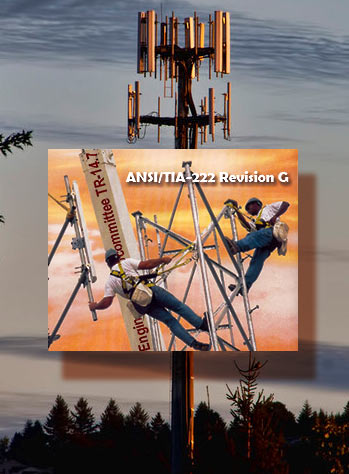 Since then, Addendum 1 was issued April 2007 and Addendum 2 was published December 2009. Addendum 3, which covers tubular pole base plates, and Addendum 4, which provides detailed information on small wind turbine support structures, were both published December 2014. Since then, Addendum 1 was issued April 2007 and Addendum 2 was published December 2009. Addendum 3, which covers tubular pole base plates, and Addendum 4, which provides detailed information on small wind turbine support structures, were both published December 2014.
The ANSI standard is required to be reviewed every five years and is oftentimes reaffirmed, such as Revision C which was active for almost 20 years.
However, according to John Erichsen, 2015's Chairman of TIA's TR-14 engineering committee, "As part of our effort to keep the TIA-222-G a relevant reflection of the needs of its users, the main committee has elected to issue addendums to the standard at non-specific durations. These revisions are intended to refresh the content more frequently than the time consuming process associated with a major revision."
Changes being assessed in Rev H
The committee, according to TIA documents, is reviewing issues for Revision H which is expected to be completed by Spring 2016. Areas being considered for introduction or change are topography, mounts, potential fatique, exposure and load factors.
They are also looking at changing exposure definitions to be consistent with ASCE7-10, which includes evaluation of surface roughness.
The ANSI/TIA-222-G 432-page standard along with all revisions can be purchased here for $831.00.
Standard turned 55 years old in 2014
Shortly before Revision D’s introduction in 1987, tower manufacturers provided a host of information to their customers to assist them in understanding the reasons for the considerable design changes and how the revision would affect their new structures in capacity, engineering and pricing. Revision G’s considerable changes also requires extensive consumer and governmental awareness. The standard was first published in August 1959. It was just 11 pages.
Revision D’s significant change introduced Basic Wind Speed which is used in the Revision F (1996) standard. Revision G incorporates a performance-based approach called "limit states design" to ensure that structures are safe under extreme loading conditions. By comparison, the old standard, which uses a "serviceability limit states" approach and checks only that the structure is capable of the service under normal conditions. Previously wind loading had been calculated according to the Fastest-Mile Wind Speed for the structure’s location as recorded from the 1-in-50-year wind speeds encountered at that location that were constant over a distance of one mile. This is calculated differently in Revision G because the government has stopped measuring wind in this manner, using a more accurate and larger set of wind measurements.
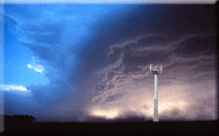
The new revision requires that wind loading be calculated according to the three-second-gust wind speed, allowing the tower’s design to accommodate instantaneous loads. Most National Weather Service sites record three-second gust wind speeds which will provide for more accurate averages for Rev G and future revisions. Ice loads are escalated with height and seismic loads, and by geographic area. All three loadings will be determined by specific local county criteria from wind, ice, and seismic maps.
Antenna mounts, ice loading and safety addressed
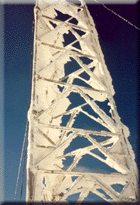 Rev G’s many changes meet or exceed the local and national building codes and the standard is being accepted by those agencies that enforce them. Rev G offers solutions for seismic and ice loading as well as providing a distinction between an urban and rural environment for design purposes. It redefines what constitutes a wind load. Rev F required the designer to consider ice loading on the structure; Rev G makes it mandatory as detailed in an ice loading map in the revision which is based upon the tower height, elevation and exposure. Rev G’s many changes meet or exceed the local and national building codes and the standard is being accepted by those agencies that enforce them. Rev G offers solutions for seismic and ice loading as well as providing a distinction between an urban and rural environment for design purposes. It redefines what constitutes a wind load. Rev F required the designer to consider ice loading on the structure; Rev G makes it mandatory as detailed in an ice loading map in the revision which is based upon the tower height, elevation and exposure.
Additional safety considerations for erection and maintenance for qualified and experienced personnel are addressed 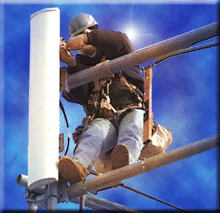 in the new standard for climbing and working facilities, requiring minimum capacities to support man loads and safety equipment. The standard includes new design theories to determine the capacity of a tower’s steel members. in the new standard for climbing and working facilities, requiring minimum capacities to support man loads and safety equipment. The standard includes new design theories to determine the capacity of a tower’s steel members.
Antenna mounts are now recognized as an extension of the tower and will be required to be designed to support the same loading as the tower. New grounding specifications have also been introduced.
Three structure categories have been introduced according to reliability requirements. Category I structures present a low hazard to human life and are used for optional or non-critical services. Category II structures represent a substantial hazard to human life and are used for services that may be provided by other means. Category III structures are used for essential facilities and represent substantial hazard to human life upon failure.
Rev G eliminates "Normal Soil"
TIA/EIA-222-F cites EIA “Normal Soil”. However, Revision G eliminates “Normal Soil”. Over the years, structures have been installed using “normal soil” designs throughout the country without the benefit of soil borings to identify actual conditions. Stamped drawings have been approved by building authorities regardless of the soil properties. Unfortunately, the error isn’t obvious until such time as a catastrophic event collapses the tower and exposes the faulty design. In 2014 there were two incidents reported where a tower fell due to a corroded anchor.
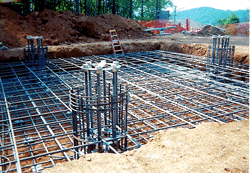
The new standard removes the “normal soil” definition, but adds an annex of values that are representative of a soil type such as clay or sand. If the client does not provide this information there is a default value that all bids are to be competed against.
The ideal situation, however, is to have the customer provide a geotechnical report along with the bid documents. It’s an expense that will eventually be incurred by the client, but can add value to the bid proposals and overall project.
How does the new revision affect pricing?
Rev G is reported to offer advantages which will affect the structure’s design and the resulting pricing.
The ANSI/TIA committee's better understanding of wind loads, ice loads, seismic loads and foundation parameters generally will allow more capacity on existing structures under the new standard, although not in every case. Wind loads will take into account the immediate environment of a structure, such as urban or hilly, flat open or hurricane shoreline.
By providing accurate and detailed information on wind and ice loading for the new structure’s location, the tower can be tailored for the owner’s requirements and may improve tower performance and increase the structure’s capacity without having to over or under-design the tower. Also, if multiple quotations are received by the purchaser it is easier under Rev G to identify if similar designs are being used to ensure a quality product.
In comparison to Rev F, many engineering runs under Rev G with identical loading, saw a decrease in pricing for towers in some zones within the country; however, areas with higher three-second-gust wind speeds and mandatory ice loading resulted in higher pricing.
However, many structures that were designed under previous revisions are over capacity when they're analyzed under Rev G, even without adding additional capacity, according to many tower company engineers.
Existing towers and Rev G compliance varies
It is required that engineers use this standard when reanalyzing new applications that go beyond the original scope of the tower loading when it was designed and constructed under previous 222 revisions. Therefore, all co-location applications not initially considered in the original design will require the tower to be reanalyzed under Rev G.
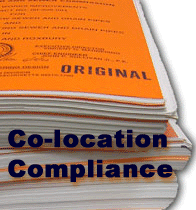
ANSI/TIA-222 is reviewed and rewritten by a volunteer committee of the industry’s leading tower engineers and other communication products engineering consultants, erection professionals and end-users.
The TIA is accredited by the American National Standards Institute (ANSI) to develop voluntary industry standards for a wide variety of telecommunications products.
Engineering Committee TR-14 (Structural Standards for Communication and Small Wind Turbine Support Structures) is responsible for the TIA-222 Structural Steel Standards for Steel Antenna Towers and Supporting Structures standard.
HISTORY OF THE TOWER STANDARD
1959 – EIA RS-222 (Revision of TR-116 and RS-194) - The country’s first standard for antenna supporting structures and antennas is published. The 11-page standard delineates the nation into three wind uniform pressure zones: A, B and C. The wind loading was considered over the full length of the structure and was measured in pounds per square foot (PSF). The standard explained that “Ice coatings are not specifically stated as icing seldom occurs simultaneously with maximum wind loading.”
1966 – EIA RS-222-A
1972 – EIA RS-222-B
1976 – EIA RS-222-C
1987 – EIA 222-D Wind pressures are replaced by basic wind speeds (mph). A new wind velocity map is introduced. The value for basic wind speed increased as a function of tower height above 33 feet AGL.
1991 - EIA/TIA 222-E The first iteration of the code to be defined by the TIA and Electronics Industries Association (EIA)
1996 - EIA/TIA 222-F This standard was used during the country's greatest buildout of towers and is currently the most adopted standard in the nation. Expanded the scope of the previous version to include the effects of ice loading. Basically, it provided two methods for analysis of ice.
2006 - ANSI/TIA 222-G Design philosophy changed to limit states design from allowable stress design.
2007 - ANSI/TIA 222-G Addendum 1 Issued
2009 - ANSI/TIA 222-G Addendum 2 Issued
2014 - ANSI/TIA 222-G Addendum 3 Issued
2014 - ANSI/TIA 222-G Addendum 4 Issued
For further information about Rev G and how it affects specifiers, estimators or owners, contact our valued tower supplier and manufacturing experts.or consult our listed professional engineers.
NOTE: This generic, non-exhaustive overview is intended to serve as a useful starting point for research and analysis of the topics addressed. Proper training, professional knowledge and oftentimes licensing are required prior to anyone providing product design, selection, installation, and construction/development-related activities. This information is neither presented to instruct nor teach anyone in the proper or safe methods of any aspect of wireless design or construction. To ensure minimum exposure and to determine compliance for a safe working environment, you must obtain the advice and guidance of an industry professional. professional knowledge and oftentimes licensing are required prior to anyone providing product design, selection, installation, and construction/development-related activities. This information is neither presented to instruct nor teach anyone in the proper or safe methods of any aspect of wireless design or construction. To ensure minimum exposure and to determine compliance for a safe working environment, you must obtain the advice and guidance of an industry professional.
WARNING: Failure to meet these minimum requirements and appropriate compliance responsibilities can result in serious injury or death to you or your fellow workers. All aspects of wireless construction are hazardous by nature. You have the sole responsibility to act safely and with caution prior to performing any construction-related task. your fellow workers. All aspects of wireless construction are hazardous by nature. You have the sole responsibility to act safely and with caution prior to performing any construction-related task.
Updated: 1.20. 2015
|